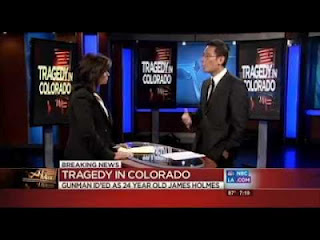 |
| A pint-sized hired gun |
Are accusations of bias on the rise?
Hired gun.
Charlatan.
Quack.
Hack.
It's every expert witness's worst nightmare. Vitriolic accusations of bias hurled at us on the witness stand, just because the cross-examining attorney doesn't like our opinion, or we have the audacity to charge for our services. (Have you heard of auto mechanics, plumbers or attorneys being called "whores" because they don't work for free?)
Unfortunately, it goes with the territory.
Now, a group of psychologists has tried to figure out just how big a part of the legal landscape accusations of bias against mental health expert witnesses are. The researchers scoured the LexisNexis legal database for insinuations of bias, with an eye to quantifying and categorizing the name-calling. In an article just published online in the journal Psychological Services, prominent forensic psychologists John Edens and John Petrila and four colleagues divided accusations of bias into five major categories:
- FOR SALE: In the largest category, 28 percent of the total, experts were disparaged as financially biased (e.g., "hired guns" or "prostitutes").
- PARTISANSHIP: Following close behind, with 27 percent of cases, were accusations of advocacy, or having an "axe to grind."
- PSEUDOSCIENCE: About 14 percent of cases involved accusations of non-scientific testimony (e.g., "charlatans" or "junk science").
- MYSTICISM: Psychologists and psychiatrists were accused of babbling nonsense (e.g., "witch doctor," "voodoo" or "hocus pocus") in 6 percent of the cases.
- NONSPECIFIC BIAS: About one fourth, or 24 percent, of cases involved nonspecific accusations or other types of allegations of bias.
Interestingly, in more than a fourth of the cases, the disparaging comments were a
basis for an appeal, typically by the defense calling foul over
prosecutorial slurs against mental health experts. Such
appeals were relatively unsuccessful, with only 18 percent of cases
being reversed in part due to on-the-record accusations of expert bias.
All of the successful appeals were in criminal trials, eight involving
sanity or diminished capacity.
Uptick in nasty name-calling?
Similar to a 1999 study by Doug Mossman, which was the only other known study to look at this issue, the researchers noticed a steady upward trend in disparaging comments in more recent years.
It might be tempting to get depressed by this study, which at first blush seems to validate what we all know and fear. However, if we think about it, the results could be seen as mildly encouraging.
First of all, if a thorough search of the massive LexisNexis database could locate only 160 cases, then blatant accusations of bias may be rarer than we think.
Secondly, there are a heck of a lot more expert witnesses in court these days than ever before. Courts and attorneys increasingly rely on forensic psychologists and psychiatrists to assist in a wide range of psycholegal areas, from child custody to tort damages to criminal sentencing and civil commitment. As well, we are increasingly called upon to explain broader social science research, such as the accuracy of eyewitness identification, to judges and juries. So, as the authors acknowledge, any increase in accusations of bias could just be an artifact of our growing presence in court.
Third, and perhaps most importantly, there really are hacks and quacks, charlatans and hired guns among are ranks. The methodology of the current study did not enable analysis of whether the accusations of partiality or bias were legitimate. In other words, attorneys may not have been just engaging in legal gamesmanship in some of these cases; they might have been righteously upset over actual bias or pseudoscientific methodology on the part of forensic psychologists or psychiatrists.
Hopefully, that's a study someone else will take up on another day.
For now, we're left with a couple of take-home messages:
First, this is not a field for the thin-skinned. We must steel themselves to have our objectivity challenged, sometimes very rudely and without basis.
More fundamentally, assuming that these accusations are tapping into popular perceptions and prejudices, forensic professionals need to work harder to reduce both actual bias and the perception of bias in our work.
The articles are:
" 'Hired Guns,' 'Charlatans,' and Their 'Voodoo Psychobabble': Case Law References to Various Forms of Perceived Bias Among Mental Health Expert Witnesses" by John F. Edens, Shannon Toney Smith,
Melissa S. Magyar, Kacy Mullen, Amy Pitta and John Petrila, Psychological Services, 2012.
" 'Hired Guns,' 'whores,' and 'prostitutes': Case law references to clinicians of ill repute" by Doug Mossman, Journal of the American Academy of Psychiatry and the Law, 1999.













